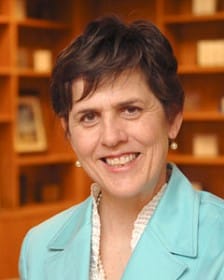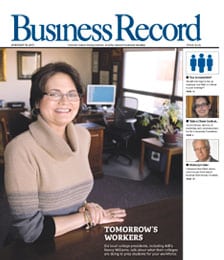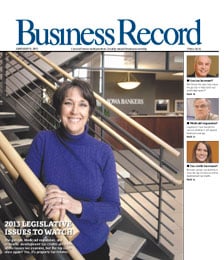The grid goes digital
.floatimg-left-hort { float:left; } .floatimg-left-caption-hort { float:left; margin-bottom:10px; width:300px; margin-right:10px; clear:left;} .floatimg-left-vert { float:left; margin-top:10px; margin-right:15px; width:200px;} .floatimg-left-caption-vert { float:left; margin-right:10px; margin-bottom:10px; font-size: 12px; width:200px;} .floatimg-right-hort { float:right; margin-top:10px; margin-left:10px; margin-bottom:10px; width: 300px;} .floatimg-right-caption-hort { float:left; margin-right:10px; margin-bottom:10px; width: 300px; font-size: 12px; } .floatimg-right-vert { float:right; margin-top:10px; margin-left:10px; margin-bottom:10px; width: 200px;} .floatimg-right-caption-vert { float:left; margin-right:10px; margin-bottom:10px; width: 200px; font-size: 12px; } .floatimgright-sidebar { float:right; margin-top:10px; margin-left:10px; margin-bottom:10px; width: 200px; border-top-style: double; border-top-color: black; border-bottom-style: double; border-bottom-color: black;} .floatimgright-sidebar p { line-height: 115%; text-indent: 10px; } .floatimgright-sidebar h4 { font-variant:small-caps; } .pullquote { float:right; margin-top:10px; margin-left:10px; margin-bottom:10px; width: 150px; background: url(http://www.dmbusinessdaily.com/DAILY/editorial/extras/closequote.gif) no-repeat bottom right !important ; line-height: 150%; font-size: 125%; border-top: 1px solid; border-bottom: 1px solid;} .floatvidleft { float:left; margin-bottom:10px; width:325px; margin-right:10px; clear:left;} .floatvidright { float:right; margin-bottom:10px; width:325px; margin-right:10px; clear:left;}
The nation’s electrical grid is powering up for a digital dialogue.
It is a conversation that has been occurring in fits and starts, with utility companies upgrading electrical meters, wiring sensors into their delivery systems and taking other steps to understand where and when the power is being distributed.
But President Barack Obama gave it a jolt when he turned the phrase “smart grid” into a policy platform on energy efficiency, clean and renewable sources of energy and reducing American’s consumption of foreign oil.
The problem is that “smart grid” suggests an existing dumb grid of wires and poles and generating stations that powers up our homes and businesses.
What is it?
In fact, a spokesman for the U.S. Department of Energy (DOE), after noting that “smart grid” was no longer his beat, spent several minutes searching for a quick definition of a smart grid.
But he came up with a tidy answer.
“Think of the smart grid as the Internet brought to the electrical system,” said the DOE’s Tom Welch.
The grid isn’t dumb; it just needs some remedial education.
“Smart grid, it’s a really good term, but it implies that we have a dumb grid,” said Diane Munns, vice president for regulatory relations and energy efficiency at MidAmerican Energy Co.
MidAmerican has been providing pieces of that education.
One step was the installation of electrical meters that can be read from afar, meaning that meter readers no longer have to dodge snarling dogs to find out how many kilowatt-hours of electricity a home or business used over a month’s time.
On the smart grid, more advanced meters would relay information in real time, second by second, minute by minute, hour by hour. They would provide two-way communication with utility companies.
“What they are talking about is a change-out of meters,” Munns said. “We have essentially in this country the same meters we’ve had for the last 100 years.”
The theory is that customers can control their energy usage by knowing the most- and least-expensive times of the day to run their appliances.
For example, a control unit resembling a programmable thermostat could pick up electrical signals from your dishwasher, computer and lights, deliver the information to the utility company and back to your computer, providing a way to monitor and control your energy consumption.
Such a system would allow the utility to charge based on usage at certain times of the day, rather than following the current system that is based on a flat-rate average, Munns said.
A smart grid also would allow utility companies to pinpoint weak spots in their generation and delivery systems.
Munns pointed out that MidAmerican already has sensors that can locate problems in its generation and delivery systems; what’s needed is a way for those sensors to talk back to the utility.
Talking back
Enabling that smart talk is at the heart of a smart grid funding proposal that ITC Midwest LLC will make to the Iowa Office of Energy Independence, the state agency charged with determining the beneficiaries of federal stimulus funds devoted to energy efficiency. (See related story on page 14.)
Stimulus funds will pay up to 50 percent of the cost of smart grid demonstration projects, but Jon Jipping, ITC Midwest’s chief operating officer, isn’t sure his company’s proposal to communicate digitally with its high-voltage transmission lines in Iowa will qualify.
“Our project may not be what they are looking for, but it never hurts to ask,” he said.
In the past, the company has been able to determine whether its lines are open or closed, but not the specific location or cause of a problem.
“We’re looking at the deployment of a networked communications system for our system in Iowa to improve the data on health and welfare of our equipment,” Jipping said.
ITC Midwest delivers energy but does not produce it. The company’s focus is on the delivery of wind energy from sparsely populated states to the coasts. Its system is required to be available to all generators of power, whether from coal-burning plants or wind farms.
“The fundamentals around smart grid are the ability to make better decisions,” Jipping said.
ITC Midwest has not set a cost for its proposal.
MidAmerican’s Munns said her company isn’t prepared just yet to jump on board the smart grid express.
“Here in the Midwest we probably don’t want to be first movers,” she said.
She noted that the digital systems are expensive and will require some investment by consumers.(*This sentence edited for clarity.)
Over time, those costs will come down, Munns said, and the utility will have a better grasp of issues spinning off the smart grid.
For example, a concern expressed in California as the result of Pacific Gas and Electric Co.’s effort to install 10 million two-way electric meters is that the smart grid will provide insights into personal lifestyles, based on power usage and the types of appliances tapping the power.
In addition, electric rates in Iowa are relatively low compared with those in California and on the East Coast, she said.
“The impact that you can have (in Iowa) is a little more difficult,” Munns said.
But in time, that impact will be determined in Iowa.
“When you look at this, it becomes a question of not are we going to do that but a question of when,” Munns said.
*Editor’s note: This story updated as noted above on April 21.









